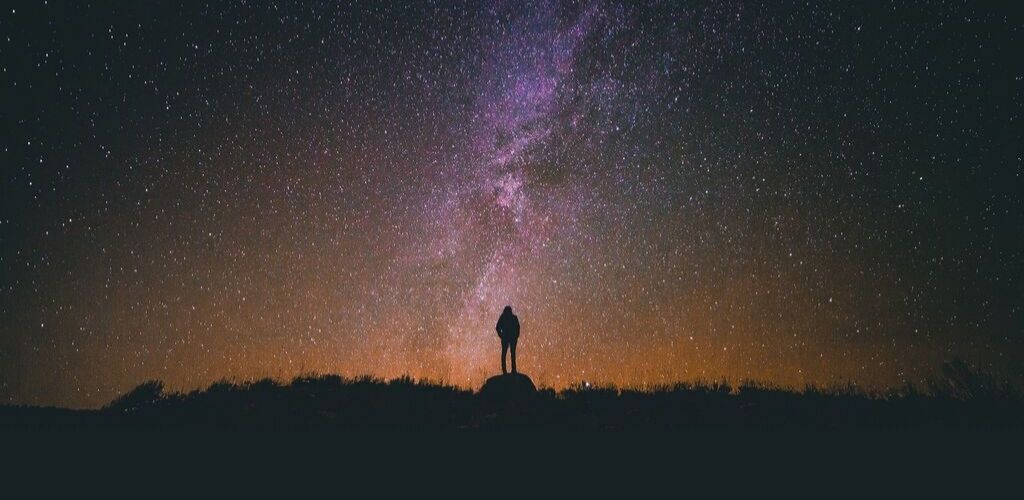
The constellations of spring enter the scene and the deep sky contains myriads of stars!
Click on your location: Northern hemisphere | Southern hemisphere
Northern hemisphere
Star map from April to May in the Northern hemisphere
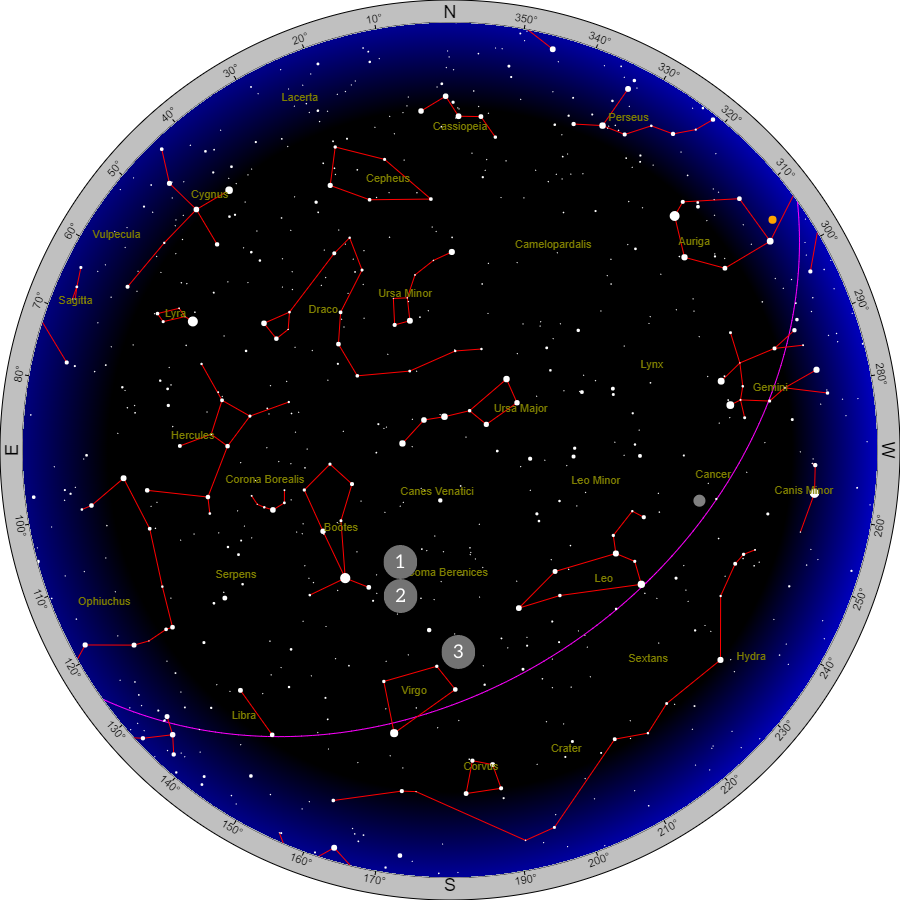
1) M3 globular cluster
Observation hours: all night.
You will need binoculars to spot M3, one of the most beautiful globular clusters in the northern hemisphere. Globular clusters orbit our galaxy. M3 is 33,900 light years away and is said to be 8 billion years old. It is on the imaginary line that connects the star Arcturus, located in the Boötes constellation, to Cor Caroli, “the heart of Charles”, the brightest star in the Hunting Dogs constellation.
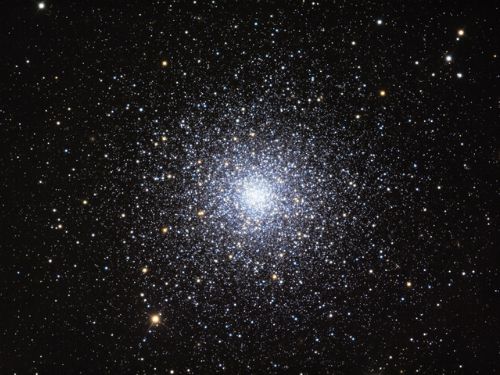
2) M53 globular cluster
Observation hours: all night.
Among the globular clusters linked to our galaxy, M53 is one of the most distant. It is 58,000 light years from our solar system and is said to be over 12 billion years old! It contains almost half a billion stars. A small telescope will reveal the true nature of M53.
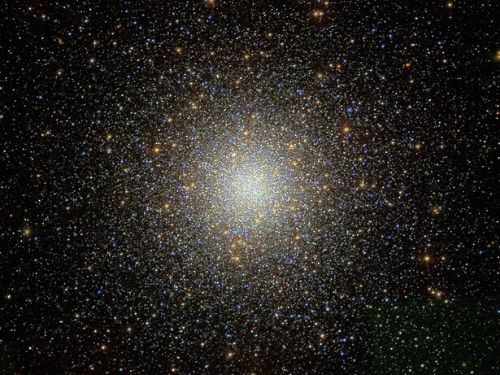
3) Black Eye galaxy (M64)
Observation hours: all night
Discovered in 1779 by Edward Pigott, it is unusual because of its dark band of dust, giving the impression that it has a black eye. It would be the result of the fusion of two star systems more than 1 billion years ago. Indeed, the dust on the outside turns in the opposite direction of the stars and the dust inside. M64 is located 24 million light years from Earth.
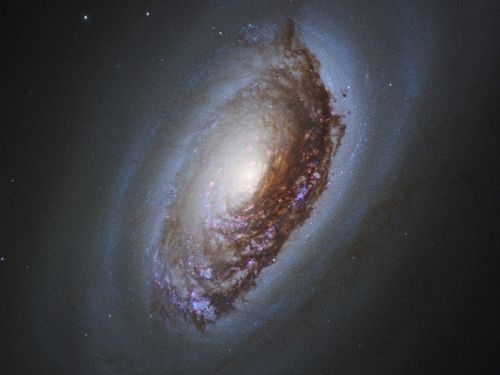
Southern hemisphere
Star map from April to May in the Southern hemisphere
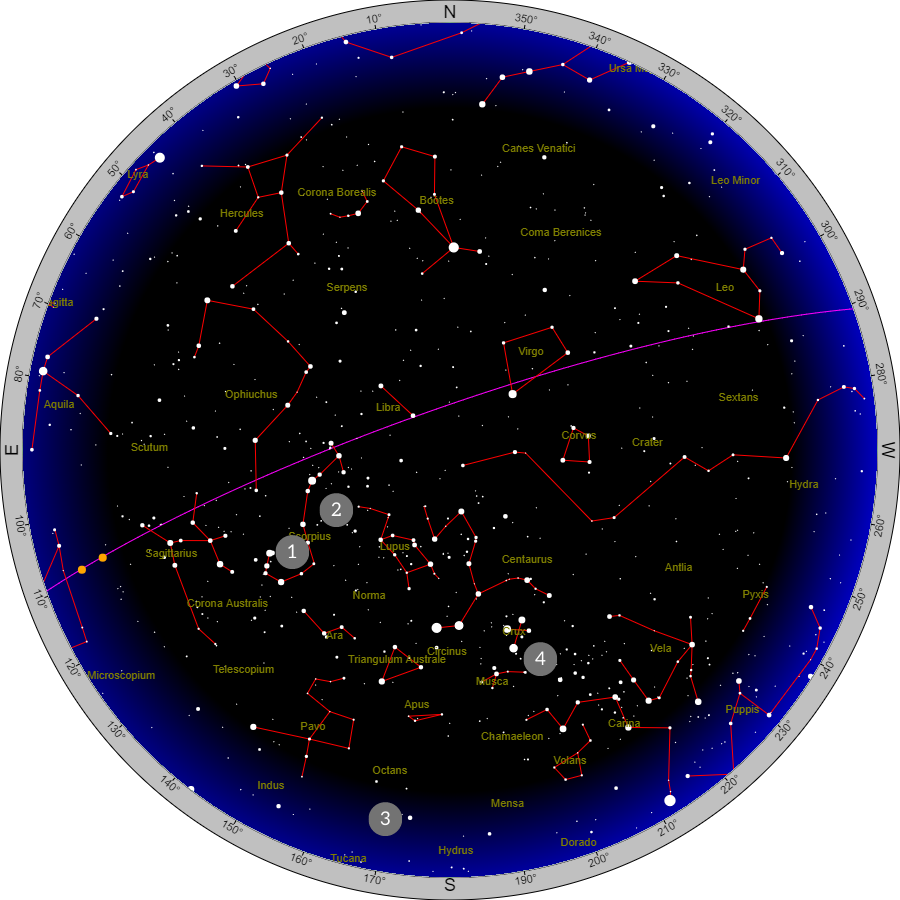
1) NGC 6231 open cluster
Observation hours: from dusk to dawn.
NGC 6231, a bright star cluster, is located 5,900 light years from us. It is only 3.2 million years old. Discovered by Giovanni Battista Hodierna before 1654, it is visible through binoculars and even more thanks to a telescope.
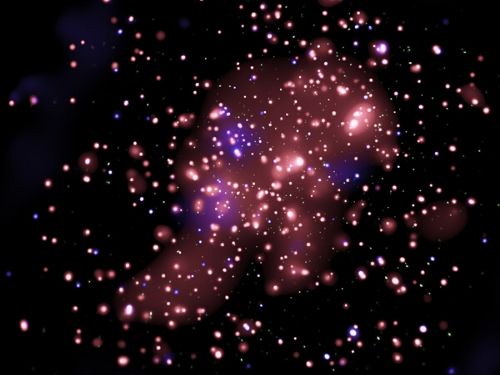
2) NGC 5986 globular cluster
Observation hours: all night.
NGC 5986 is an ancient cluster. Some stars in this globular cluster are almost 12 billion years old! This makes them the oldest stars in the known universe. A telescope is necessary because binoculars only reveal a small blurry spot.
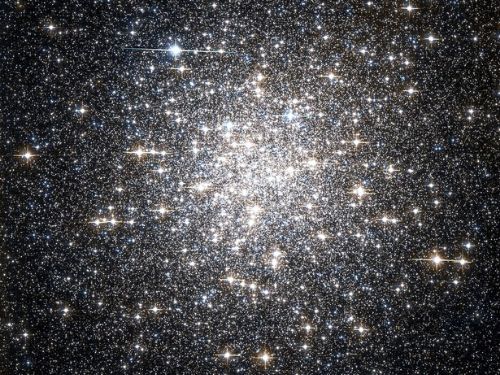
3) Small Magellanic Cloud
Observation hours: during most of the night.
The Magellanic clouds are among the most remarkable objects in the night sky. The Small Magellanic Cloud is a dwarf galaxy containing hundreds of millions of stars. At 200,000 light years from us, it is both one of the closest neighbors to our galaxy and the most distant object that we can observe with the naked eye.
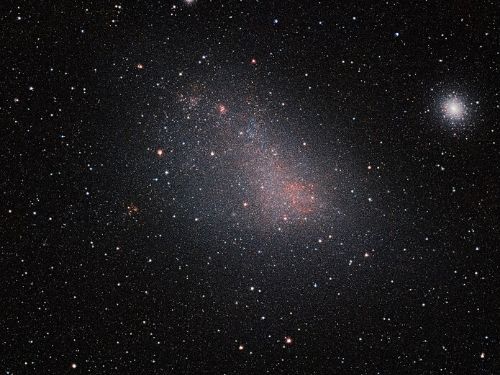
4) Running Chicken Nebula (IC 2944)
Observation hours: from dusk to dawn.
The Running Chicken Nebula is an open star cluster associated with a nebula. Interesting feature, this nebula includes a type of object called “Bok’s globules”, dark spots in the nebula that would be areas of star formation. However, no formation has yet been observed.
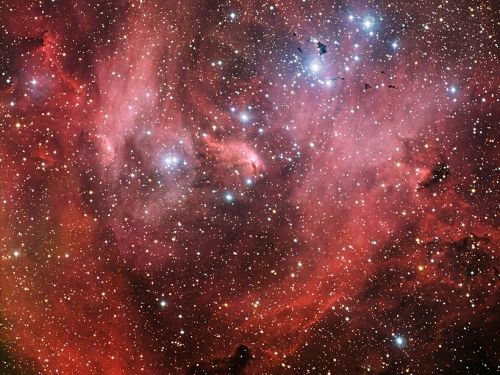
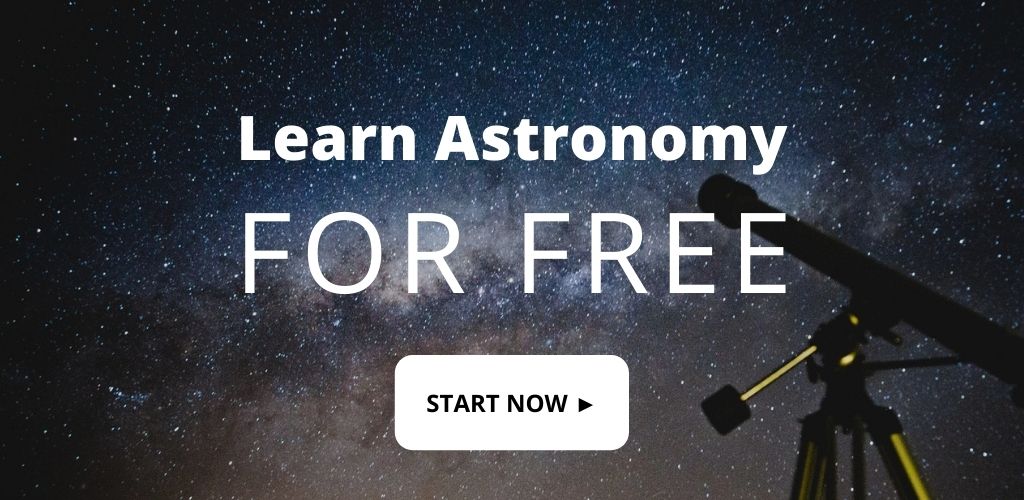
Image credits
- M3 globular cluster: Adam Block/Mount Lemmon SkyCenter/University of Arizona / CC BY-SA 3.0 US (https://creativecommons.org/licenses/by-sa/3.0/us/deed.en)
- M53 globular center: Sloan Digital Sky Survey / CC BY (https://creativecommons.org/licenses/by/4.0)
- Black Eye galaxy (M64): Judy Schmidt from USA / CC BY (https://creativecommons.org/licenses/by/2.0)
- NGC 6231 open cluster: Credit – X-ray: NASA/CXC/Univ. of Valparaiso/M. Kuhn et al; IR: NASA/JPL/WISE / Public domain
- NGC 5986 globular cluster: en:NASA, en:STScI, en:WikiSky / Public domain
- Small Magellanic Cloud: ESO/VISTA VMC / CC BY (https://creativecommons.org/licenses/by/4.0)
- Running Chicken Nebula (IC 2944): ESO / CC BY (https://creativecommons.org/licenses/by/4.0)